Sataejjim is a traditional braised dish that’s made with bite sized beef shank meat. Make it in your slow cooker with lots of root vegetables.
For those of you who have been asking for more slow cooker recipes, here’s another one for you! Sataejjim (사태찜) is a traditional braised dish that’s made with bite sized beef shank meat (satae).
The method and flavor are similar to galbijjim (갈비찜), braised short ribs. Beef shank meat is a tough cut of meat with lots of connective tissues. Slow cooking breaks down the collagen into a rich, flavorful gelatin.
Sataejjim is often a cheaper or less fatty alternative to galbijjim in Korea. Beef shank is typically sold bone-in here in America, but boneless shank meat is a popular cut in Korea for making soup and braised dishes such as jangjorim (soy braised beef). Check Korean markets for boneless beef shank meat.
If you are using bone-in pieces, cut the meat off the bones into bite sizes and throw both the meat and bones in the slow cooker. The bones will impart great flavor to the dish.
The seasoning is very similar to the one used for galbijjim. Traditional sataejjim (and galbijjim) calls for grated Korean pear. For this recipe, I experimented with apricot preserve. It worked great! You can use a Korean pear along with some sugar or honey.
Instead of Korean radish, which is traditional in Korean braised dishes, I used some other root vegetables here for a change. I used a combination of parsnip, celery root, and burdock root, which I had in the fridge. Feel free to use Korean radish; turnip is another good choice.
More Slow Cooker Recipes
Slow cooker beef bulgogi
Slow cooker dakjjim
Slow cooker spicy pork ribs
Slow cooker galbijjim (beef short ribs)
Slow cooker chicken soup with napa cabbage
For more Korean cooking inspirations, follow along on YouTube, Pinterest, Twitter, Facebook, and Instagram.
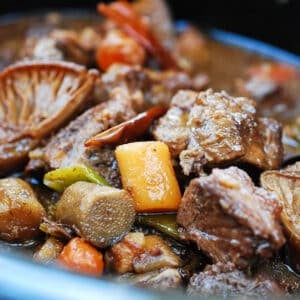
Ingredients
- 3 pounds beef shank meat satae, 사태
- 10 ounces root vegetables parsnip, celery root, burdock root, turnip, and/or Korean radish
- 1 medium carrot
- 1/2 medium onion
- 2 scallions
- 8 plump garlic cloves
- 3 to 4 thin ginger slices about 1-inch round
- 4 dried shiitake mushrooms or any other dried mushrooms, broken up into 2 to 3 pieces
- 4 small dried red chili peppers or 1 teaspoon crushed red peppers - optional
Sauce
- ⅓ cup soy sauce
- 1/4 cup rice wine or dry white wine
- 2 tablespoons apricot preserve or honey - see note
- 1 tablespoon sugar
- pepper to taste
- salt
- 1 tablespoon sesame oil
Garnish
- 1 scallion roughly chopped
Instructions
- Place the meat and vegetables in the slow cooker. Mix together the soy sauce, rice wine, apricot preserve (or honey), sugar and pepper in a small bowl, and pour over the meat and vegetables. Toss everything to coat with the sauce. Cover, and cook for about 4 hours on high or 6 to 8 hours on low. Flip the meat over midway through the process, if you’re home. Adjust the cooking time, depending on how tender you want your meat to be.
- Remove the meat and vegetables from the slow cooker to a large serving bowl. Pour the sauce over the meat to serve. You can run the sauce through a strainer for a clearer sauce if you’d like.


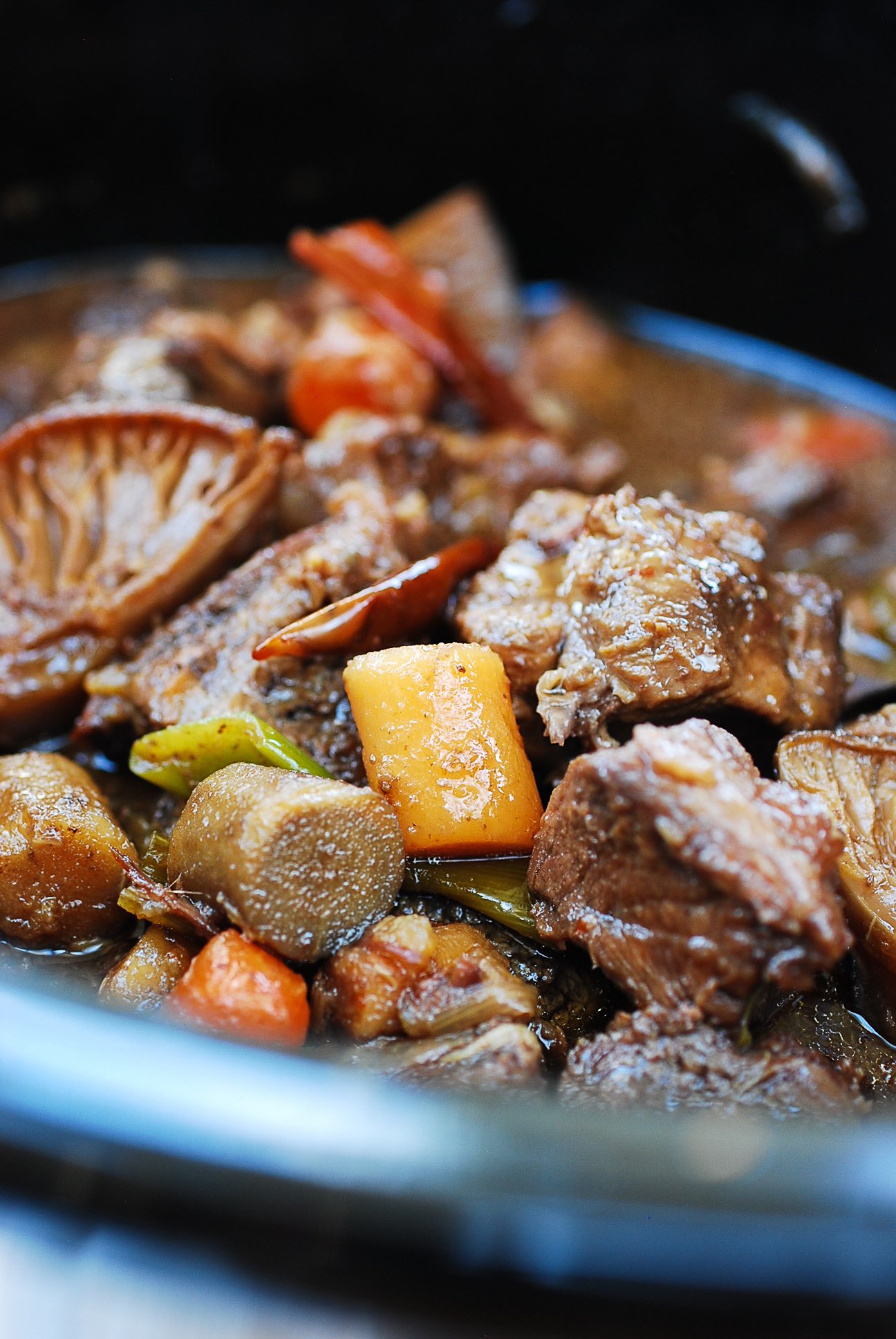
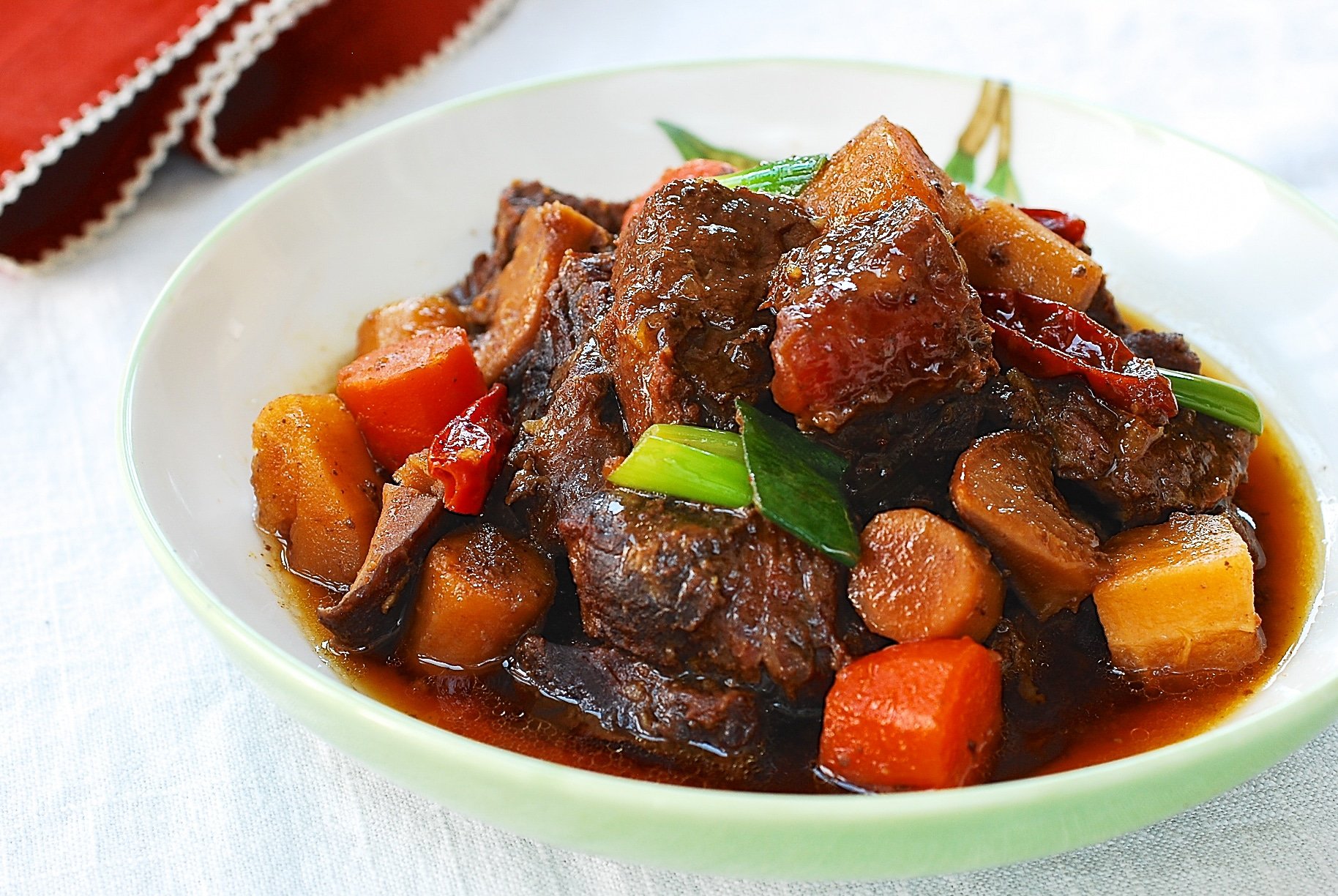

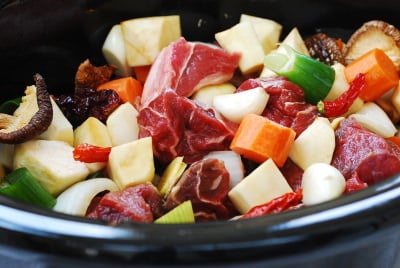
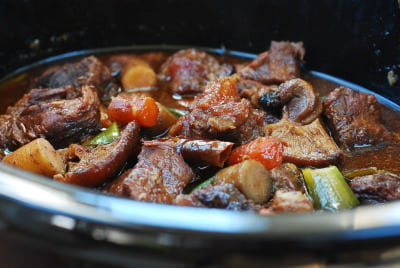
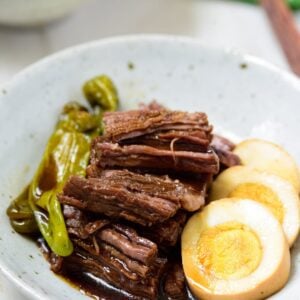
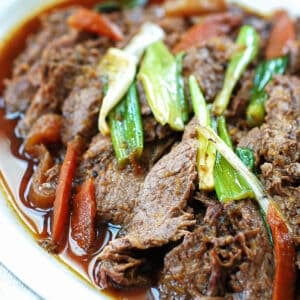
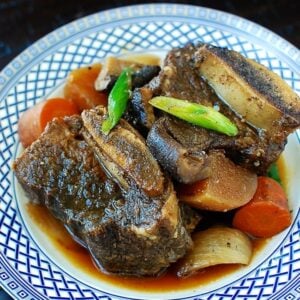
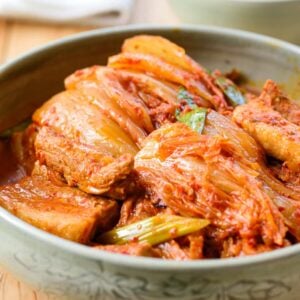

















Elaine says
This was awesome. We got cross cut shanks as part of a beef share, and partner found this recipe. I cut the meat off the bone, and was dubious about the results. However, we were very pleased with how tender the meat was. It was also a first in cooking with parsnips.
Lisa says
Delicious! Beef shank is actually my favorite piece of beef for anything braised/slow-cooked. I use my instant pot and usually cook the shank for about 1.5 hour (It’s technically ready after about 1.15 hour) and then I add the veggies for another 15-30 min. The meat always comes out extremely tender.
Magda says
Hi! Can I make this over the stove? And is there any non-alcoholic substitute for the wine? Thanks!
Hyosun says
Yes you can, but you’ll need to add some water. See my stovetop galbijjim recipe for reference. https://www.koreanbapsang.com/galbijjim-korean-braised-beef-short/
KAY LEE says
Hello Hyson,
In shopping for beef shank to make this dish, I can only find beef shank cut cross-wise with the bone in the middle. Would it be ok to use that cut of shank or should I cut the meat off of the bone?
Thank you.
Hyosun says
Oh the bone will be great in braising!
D.S. says
From my experience Boneless Beef Shanks are usually a cut you’ll only find in Asian grocery stores. It’s a way more popular cut in Chinese and Korean cuisine than European/American ones. They just need a really long braiise
Lisa says
I only use the beef shank (bone-in) and it’s delicious! Adding the bone makes it extra delicious!
Sylva says
Hi Hyosun,
Would like to check if I can replace rice wine with soju and if potatoes can be added.
Thanks.
Hyosun says
Yes to both! Enjoy..
Myung Moon says
Can I use this recipe for instant pot?
Sue R says
LOVED this recipe although I cooked diced oyster blade steak instead as it was what I had then cooked it in the pressure cooker after sealing the beef. I also added some gochujang as we like things spicy. I thickened it at the end although I couldn’t stop taste testing the juices haha! So good! Thank you.
Vernon Kamiaz says
Is there a Korean recipe for ox tail?
Hyosun says
I have Instant Pot ox tail recipe. You can use the recipe to cook in the slow cooker. You’ll need to cook about 4 hours on high heat or 6 to 8 hours on low heat.
https://www.koreanbapsang.com/pressure-cooker-braised-oxtail-kkorijjim/
Bipasha says
I love your website! I just got a slow cooker and your recipes are pretty straightforward for meats cooked to perfection, Korean-style. I just made this and it’s delicious but I will try it with Korean pear next time.
Looking forward to making the oxtail recipe next 🙂
Shirley says
Hi Mrs. Ro! I love your website and delicious looking recipes. I just recently found your site & have only tried 1 dish so far & it was a real hit with my family. I’m looking forward to trying out many more of your recipes. I am Taiwanese-American and my husband is Korean-American, so I want to learn more Korean recipes from you :).
I am wondering if I make this recipe in the Instant Pot, how long do you think it would take to cook on high pressure? Also, I purchased a boneless beef chuck roast, not shank. Would that taste as good? Thank you so much!
Hyosun says
Hi Shirley! Happy to hear you found my blog and tried a recipe that your family liked. I’d say 25 minutes for boneless, tough cut of meat that’s cut into about 2-inch chunks. Beef chuck will be good.
Coleen McClish says
I loved it it turned out great. Since I use my slow cooker more than my stove it made this dish very easy to make.
Mona Biblow says
This cut of meat is sold in Kosher butchers as “kolichel.”. Good to know if you can’t find Korean cut of beef. The spelling has a few variations, but easy to find, plenty of recipes online. This is a great new way to cook.
Vittoria says
We always love your recipes and this one was no exception! A total hit with the whole family and it came together so easily. Your recipes are truly addictive! Thanks so much for sharing.
Jeanie says
Can this be made in an Instant Pot? If so, how long would you cook it for? Thanks for all your wonderful recipes!
Hyosun says
Yes, definitely! It took 20 min when I tried with a half of the recipe, so you may need 25 minutes for the whole recipe. You’re welcome! My pleasure!
ben says
Braising is frying the meat first to add surface caramelisation and flavour, then cooking slowly. Maybe add a braising step before adding to the slow cooker for more flavour?
Teresa says
This was delicious and easy! Great flavor and hearty for winter (in Australia). I thickened the broth with some cornstarch and a small spoonful of gochujang at the very end. Thank you for the recipe!
Moroccan recipe says
Dish is delicious, rich in healthy ingredients and provide a wonderful